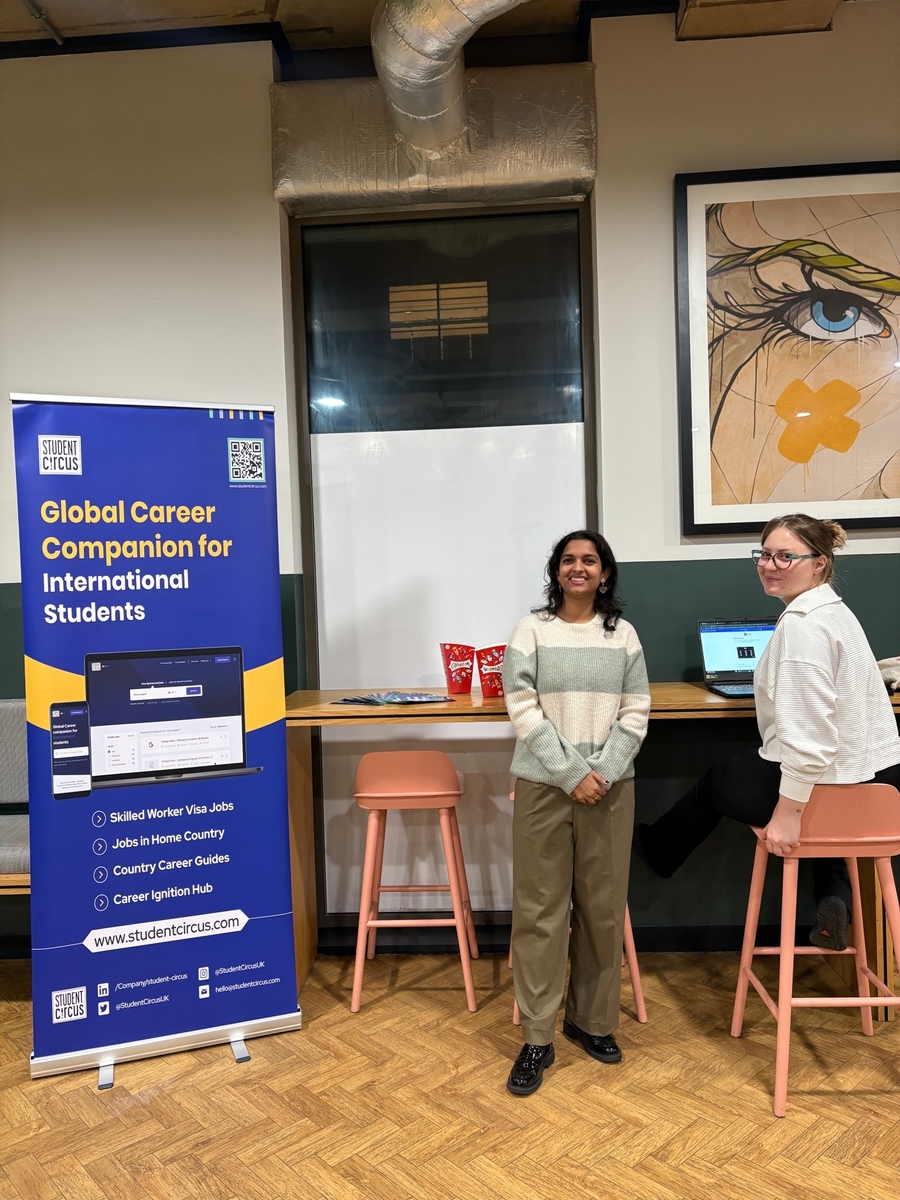Expert advice to help you create the perfect graduate CV…
Your CV is your chance to grab an employer’s attention, convince them of your potential and make sure they want to meet you. Vita Student has teamed up with 2 of the world’s leading authorities to create an effective, stand-out CV – Prospects & The James Innes Group: The CV Centre.
We’ll take you step-by-step through each section of your CV. You’ll find CV do’s and don’ts, tips and advice plus a carefully crafted CV template to make sure yours is perfect!
Let’s get started…

Your CV SHOULD
- Introduce you as a promising potential candidate for the role
- Present all of your relevant skills and accomplishments
- Tell a story of your professional experience to date
- Reflect something of your character through your professional statement and interests sections
Your CV SHOULD NOT
-
- Be an exhaustive list of your every achievement
- Include a lengthy description of every course you’ve ever taken
- Contain information just to ‘bulk it out’ . Being concise will help maintain reader interest

Personal Details
Start with your name, and follow up with your address, phone number, email and any links to an online portfolio or blog. Present the information as a letterhead, not on a list (this looks more professional AND will save you some precious space in the body of your CV later!)
Professional Profile
Your professional profile is like the personal statement of your CV – your first chance to sell yourself. It must tell the reader who you are, what your experience is and what your strengths are. Be sure to do this swiftly and succinctly – no waffling!
Some rules of thumb for your personal profile…
-
- Lose the I, my, me – write in the third person, no “I did this” or “I did that”!
- Edit. Edit. Edit. – your professional profile should be no more than 5-10 sentences. Create something short and powerful, communicating your best and most relevant sales points. The best way to do this is to get EVERYTHING down and then cut it down to size.
- Back it up! – don’t just make a claim about the achievements you’ve made, give examples of experience you have that supports the professional qualities you’ve listed in your CV.
- One size does NOT fit all – it might seem like extra work, but tailoring your CV to each job is so important! What is the recruiter looking for and how do your skills and qualities match this?
Education & Qualifications
Your education and qualifications should be written in reverse chronological order – most recent qualifications first and simply summarise the rest. This section should take up NO MORE than three to four lines. As a graduate candidate, all a recruiter needs to know is:
1. Your degree subject, University & year of graduation
2. Number of A Levels & the year it was achieved
3. Number of GCSE’s including Maths and English &the year it was achieved – simply summarise, don’t list every subject!

Employment History
Just like your education and qualifications, your work history should be written in reverse chronological order. This section requires a little more detail, but still try to keep things as concise as possible.
For each position you’re listing, you’ll need to include the following information:
- The company name and location – top tip, if you’re using abbreivated terms make sure you spell them correctly! For example, Ltd. has a full stop, but plc does not.
- When you worked there – if it was for over a year, just the year is fine – the recruiter doesn’t need to know each month you worked there.
- Your job title – do NOT embellish your job title, the recruiter may contact your previous employer and you’ll be caught out!
- A description of what your role entailed – this is your chance to really sell yourself, so make it compelling! Remember to continue writing in third person (no “I’s” or “me’s”). Bullet point your job description in a logical order and focus on your main duties and responsibilities. Remember to give specific examples and emphasise your achievements.
“Don’t sell yourself short. Remember to include any relevant unpaid work or volunteer experience.”
– James Innes (Founder, The CV Centre)
Key Skills
The skills section of your CV is a great chance to sell your suitability for the role, especially if your work experience is a little limited.
Think about the skills you gained through internships and other work throughout your degree. Regardless of whether or not a skill was gained in a professional setting, write it down! Remember, as tempting as it may be, DO NOT lie. You don’t want to be the person who claims to be fluent in Finnish only to be faced with a Scandinavian interviewer!
Once you have your list of skills, break them up and list them in a logical order under subheadings, if possible under subheadings such as: communication skills; interpersonal skills; technical competencies and research skills .
Interests
This section often sparks debate – “is a recruiter really interested?” True, space on your CV is limited, but if you can, always aim to include it. Your interests give your graduate CV character. Plus, interesting or unusual interests also make for great interview ice breakers!
Keep it simple – use bullet points.
Keep it professional – unusual and interesting hobbies are great for capturing a recruiter’s attention, but make sure it’s for the right reason!

Now it’s time to put your work to good use by making it look the part!
Unless you are applying for a creative design-based job, steer clear of “creative” layouts and quirky typefaces.
Your CV layout needs to do two things:
1. Present a professional image
2. Allow the recruiter to read the information quickly and easily
“Research shows that recruiters spend an average of just 8.8 seconds reviewing each CV. Make sure yours is concise and easy to read with a clean layout, simple format and uncluttered pages.” – Prospects
So let’s break this down…
LENGTH
A CV should typically be 1-2 pages long, depending on the individual’s experience and qualifications.
TYPEFACE
Stick to Times New Roman and Arial. Yes, unusual and quirky typefaces might add visual interest to your graduate CV, but they will also detract from its readability – not just with the recruiter but also with any automated scanning software. Choose the wrong typeface and your CV may end up in the bin before even being seen by human eyes!
FONT SIZE
Stick to a font size of 11 or 12. Don’t be tempted to use 10 point or smaller just to save space – this will only make your CV harder to read. Use bold to highlight headings, sections and key information (such as your degree title). Italics should only be used when quoting publications.
COLOUR
Keep colour to a minimum and stick to simple black ink. If you do decide to opt for colour, use one colour only as a highlighting tool for titles and sections, but nothing else.
SECTIONING AND LAYOUT
Getting your CV layout right can be tricky. It’s a bit like a jigsaw puzzle – you’ve got all the pieces and somehow you need to make the information fit together! Always start with your name and contact details, followed by your professional profile. But what next? The answer is simple, lead with your strongest selling point. For example, if you’re lacking work experience but your grades are excellent, open with that. If your grades aren’t great but you’ve impressive intern experience, then work history is your sell. List the remaining sections in order of impressiveness, then add your interests at the very end.
BEYOND YOUR GRADUATE CV: BRAND YOU
So you’ve bossed your graduate CV and the recruiter has decided you are 100% their type on paper. But are you their type off it?
90% of recruiters now google a candidate before inviting them to an interview AND 75% of HR departments are now required to search candidates online!
In a world of social media, it’s no longer just down to your CV and cover letter to showcase who you are, but the information that can be found about you online.
Google yourself. Those search results are Brand You – the picture from which hiring managers will form their opinion of you.
Don’t neglect your online image – it could easily become your biggest liability, EVEN with the world’s best graduate CV.
We think you’re ready to boss your graduate CV. Your career starts here!
VITA STUDENTS, IT’S TIME TO BEGIN BIG!



